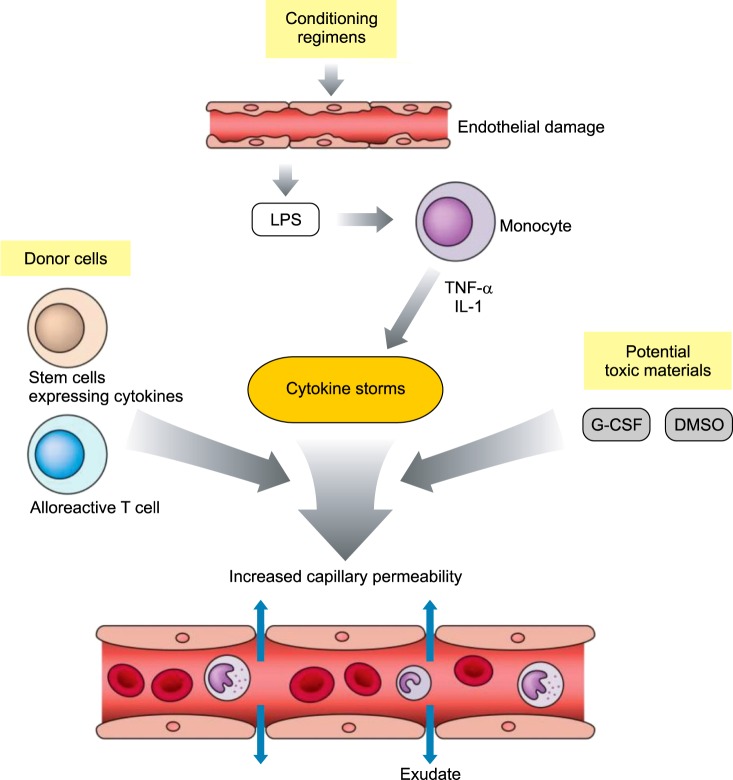Blood Res.
2016 Sep;51(3):152-154. 10.5045/br.2016.51.3.152.
Pre-engraftment syndrome: clinical significance and pathophysiology
- Affiliations
-
- 1Department of Pediatrics, Hanyang University Medical Center, Hanyang University College of Medicine, Seoul, Korea.
- KMID: 2353492
- DOI: http://doi.org/10.5045/br.2016.51.3.152
Abstract
- No abstract available.
Figure
Reference
-
1. Lee YH, Lee SW, Noh KT, Lee YS, Lee YA. Early inflammatory syndrome following cord blood stem cell transplantation. Korean J Hematol. 2004; 39:66–70.2. Kishi Y, Kami M, Miyakoshi S, et al. Early immune reaction after reduced-intensity cord-blood transplantation for adult patients. Transplantation. 2005; 80:34–40. PMID: 16003230.
Article3. Lee YH, Lim YJ, Kim JY, Kim YD, Lee SW. Pre-engraftment syndrome in hematopoietic stem cell transplantation. J Korean Med Sci. 2008; 23:98–103. PMID: 18303207.
Article4. Wang X, Liu H, Li L, et al. Pre-engraftment syndrome after unrelated donor umbilical cord blood transplantation in patients with hematologic malignancies. Eur J Haematol. 2012; 88:39–45. PMID: 21933279.
Article5. Park M, Lee SH, Lee YH, et al. Pre-engraftment syndrome after unrelated cord blood transplantation: a predictor of engraftment and acute graft-versus-host disease. Biol Blood Marrow Transplant. 2013; 19:640–646. PMID: 23380345.
Article6. Brownback KR, Simpson SQ, McGuirk JP, et al. Pulmonary manifestations of the pre-engraftment syndrome after umbilical cord blood transplantation. Ann Hematol. 2014; 93:847–854. PMID: 24346710.
Article7. Cornell RF, Hari P, Drobyski WR. Engraftment syndrome after autologous stem cell transplantation: An update unifying the definition and management approach. Biol Blood Marrow Transplant. 2015; 21:2061–2068. PMID: 26327628.
Article8. Gardiner CM, Meara AO, Reen DJ. Differential cytotoxicity of cord blood and bone marrow-derived natural killer cells. Blood. 1998; 91:207–213. PMID: 9414286.
Article9. Kotylo PK, Baenzinger JC, Yoder MC, Engle WA, Bolinger CD. Rapid analysis of lymphocyte subsets in cord blood. Am J Clin Pathol. 1990; 93:263–266. PMID: 2301287.
Article
- Full Text Links
- Actions
-
Cited
- CITED
-
- Close
- Share
- Similar articles
-
- Pre-engraftment Syndrome in Hematopoietic Stem Cell Transplantation
- Pre-engraftment Syndrome in Allogeneic Hematopoietic Stem Cell Transplantation
- The Current Concepts for the Pathophysiology of Idiopathic Carpal Tunnel Syndrome
- Risk factors for mortality in patients with bloodstream infections during the pre-engraftment period after hematopoietic stem cell transplantation
- Genetics of Pre-eclampsia


